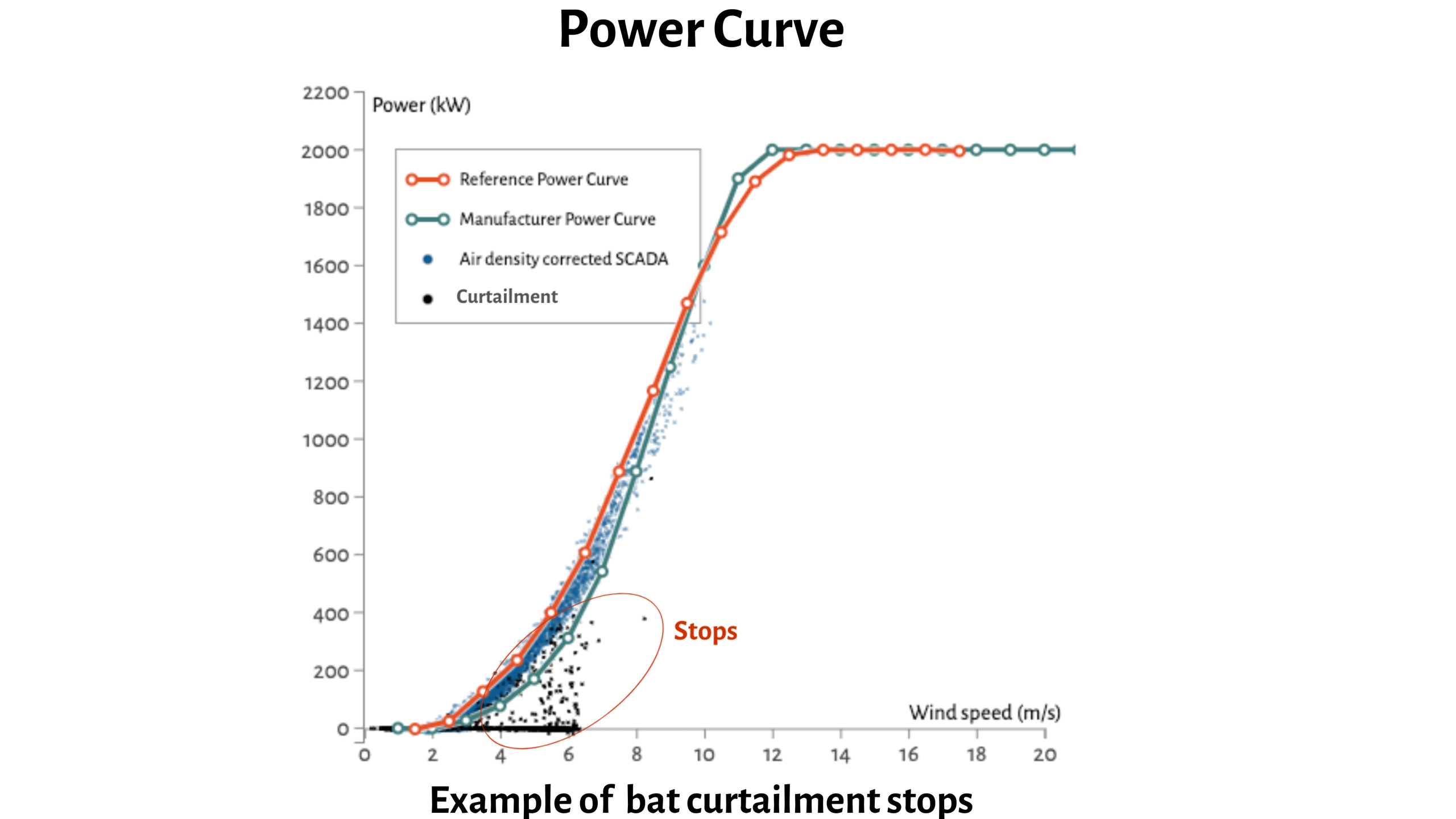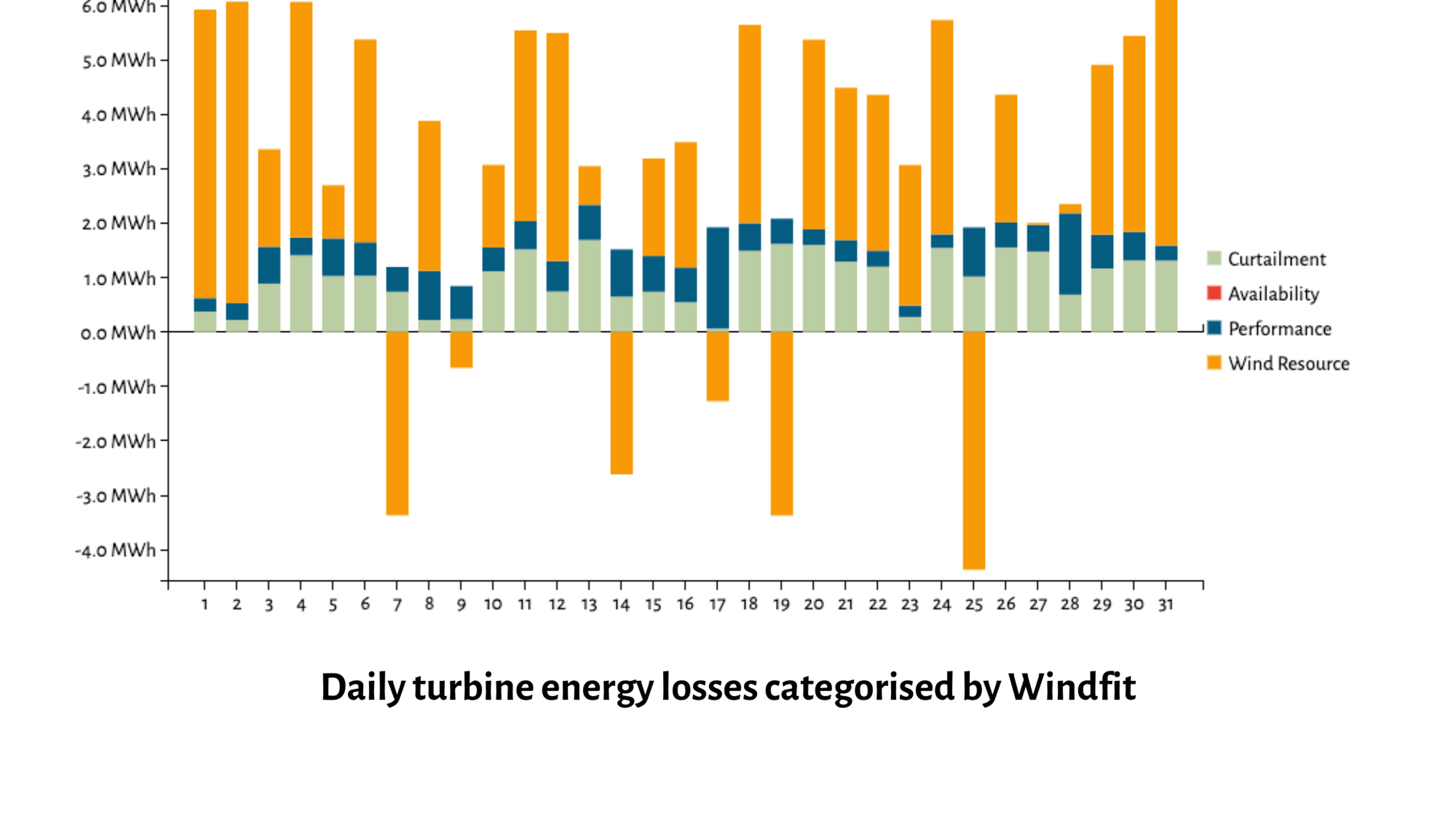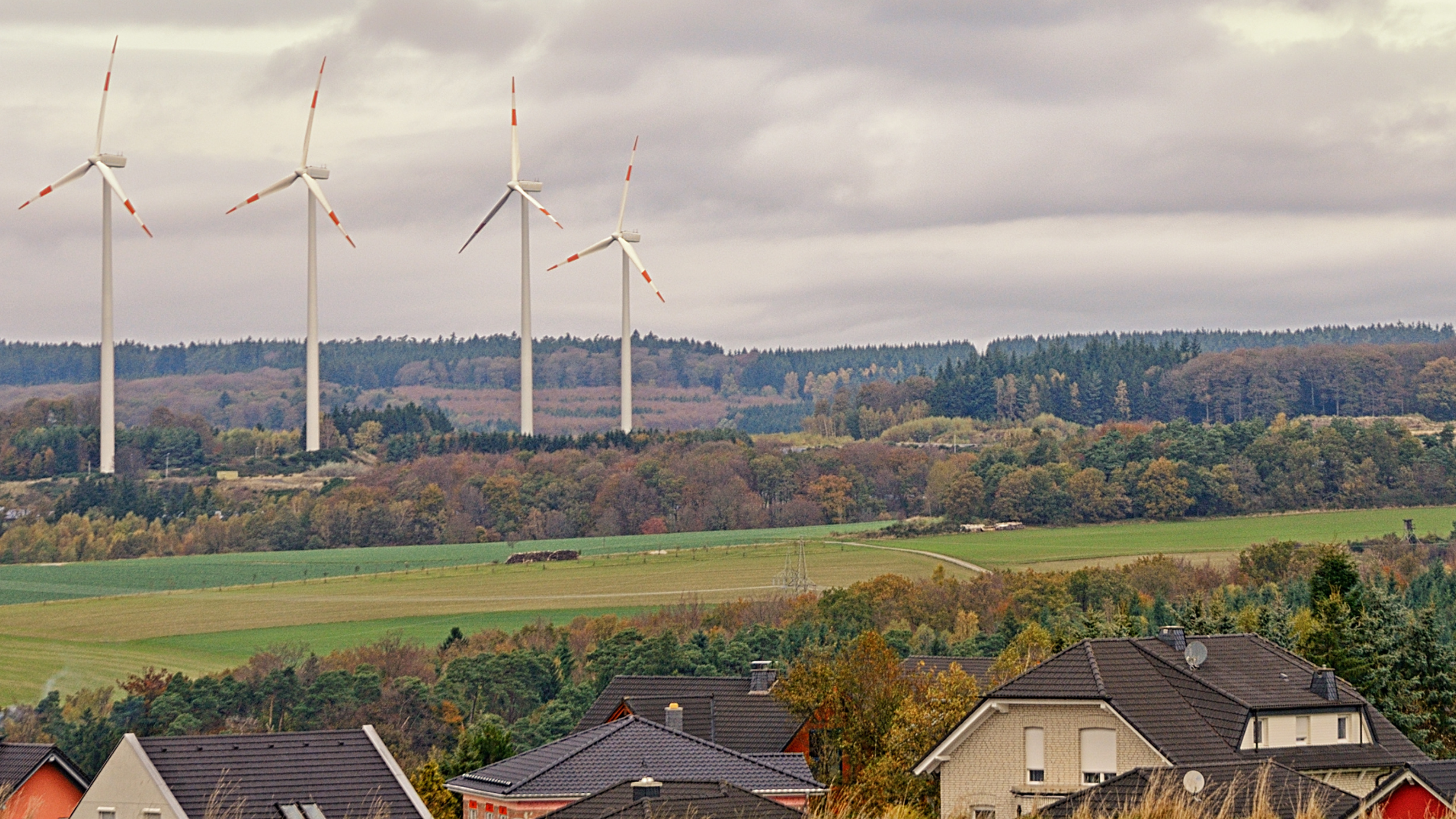Curtailments consist of partially or totally imposed power reduction on a wind farm when the grid cannot absorb all the produced power or on individual turbines to meet environmental constraints or mitigate operational risks.
In this article, we'll explain the importance of monitoring the impact of curtailments on wind farm production by ensuring that a curtailment plan is correctly implemented to mitigate associated risks. It is crucial to do so not only to meet environmental requirements but also to optimise power output and prolong asset lifetime. In some cases, it may be worthwhile to reconsider the need for certain curtailments.

Types of Curtailment
There are many reasons wind turbines need to be curtailed during operation, some of the most common types of curtailment include:
Grid Curtailment
A partial or total power limitation is imposed on the wind farm to avoid grid overload or in case of grid maintenance. It can also be curtailed at certain defined times within some grid agreements.
Bat Curtailment
To reduce the risk of bat mortality in populated areas, turbine stops may be implemented during periods of high bat activity. Bat curtailment plans often include season (warmer months), hour (nighttime), wind speed (low), and temperature (mild and above). It's important for asset managers to ensure that these parameters are correctly configured to prevent unnecessary turbine stops.
Noise Curtailment
One of the significant environmental impacts of a wind turbine is sound emissions. Though the acoustic performance of turbines has been improving, power limitations are in some cases necessary to reduce the acoustic emergence of turbines, through either the application of “noise power modes” defined by the OEM or by complete shutdowns for specific conditions (wind sector, hour, season).
Wind sector management - Turbulence/Wake effects
In the case of a site with turbulent wind conditions, the OEM can impose curtailments to reduce the turbine's fatigue loading. This can also be the case of wind farms with closely spaced turbines, where the turbine loading is influenced by the wake effects from nearby turbines. It may be necessary to reduce the “captured” power or completely shut down certain turbines for certain wind speeds and directions. This is termed “wind sector management”.
Shadow flicker Curtailment
A rotating wind turbine casts a shadow on the ground or buildings causing a flickering effect. This can present an annoyance for people living nearby. To minimise the occurrence of shadow flicker, the curtailment typically consists of turbine shutdowns programmed during relevant periods (usually sunrise or sunset).

Windfit Approach
As presented, there can be multiple reasons for wind turbines to be curtailed during operation. Sometimes there can even be a combination of multiple types of curtailment plans imposed on individual turbines simultaneously with a significant impact on their energy production.
With that in mind, it is critical for wind farm owners and asset managers to precisely monitor curtailment plans: not only to assess their impact on the production but also to make sure that the curtailment parameters are correctly set to avoid any unnecessary energy losses.
In order to perform detailed monitoring of this key aspect of wind farms operation, Windfit provides wind asset owners and managers the necessary tools to:
Quantify the energy losses due to curtailment of their wind assets: on a fleet level, wind farm level, and turbine level, on a yearly, monthly, or daily resolution;
Diagnose issues that directly impact the correct implementation of curtailment plans such as north deviation or erroneous wind speed measurements that are not visible through SCADA data;
Verify curtailment plan parameters using ML-based detection and clustering algorithms to detect wind sectors, wind speeds, hours of activation;
And much, much more!
Key Points on Wind Turbine Curtailment
Whether it is to mitigate issues associated with turbine loading, grid export, or environmental constraints, it is crucial to ensure that a curtailment plan is correctly applied to maintain the reliability, safety, and productivity of assets.
Therefore, analysing curtailment plans is vital. This can be performed using SCADA data with limitations in terms of data access and quality, and inadequate analysis tools. Hence, the significance of independent monitoring and analysing tools such as Windfit. It provides wind asset owners and managers with the benefits of an independent monitoring tool and an accessible and intuitive platform for SCADA analysis to extract valuable insights to optimise asset performance.
To learn more about our approach and how it can benefit your wind farm, feel free to contact us.
Sereema Team
